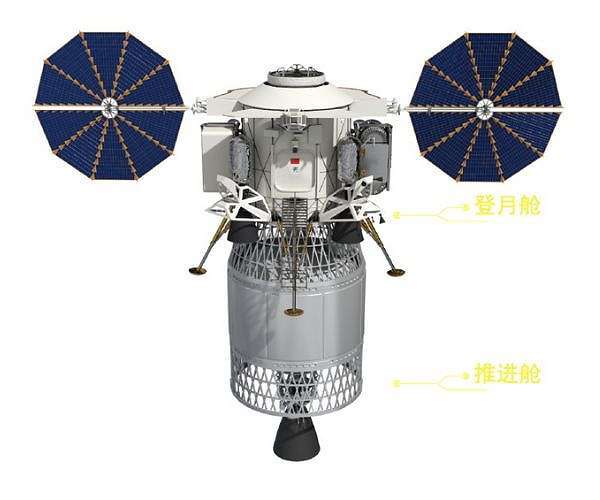3.09.2023

Artist's renderings of the country's next-generation lunar landing module.
China has published artist's renderings of the country's lunar landing module and its next-generation crew spacecraft, both of which will be central to the nation's grand goal of sending astronauts to the moon.
According to the renderings and their descriptions published by the China Manned Space Agency on Thursday, the lunar landing module will have two parts - a landing section and a propulsion section, and will have a weight of nearly 26 metric tons. It will be capable of accommodating two astronauts.
The rover carried by the module will have a weight of 200 kilograms, four wheels and a host of scientific equipment.
The new crew spacecraft will have an overall weight of 26 tons and will consist of two components - a reentry capsule and a service section. It will feature reliability, reusability and modular designs that suit both near-Earth flights and lunar landing tasks.
The spaceship will be able to transport three astronauts into lunar orbit in a moon landing mission, and can carry up to seven crew members to China's space station in low-Earth orbit, according to the agency.
China has announced a general plan of fulfilling its first manned mission to moon before 2030.
The roadmap drafted by scientists and mission planners involves two launches of the Long March 10 heavy-lift carrier rocket, which is also being designed, from the Wenchang Space Launch Center in Hainan province to transport a landing module and a manned spacecraft to lunar orbit.
After reaching their preset orbital positions, the landing module and the spacecraft carrying astronauts will rendezvous and dock with each other. Two crew members will enter the landing module, which will then undock and descend toward the lunar surface for an engine-assisted soft landing.
On the moon, the astronauts will drive a rover to carry out scientific tasks and collect samples. Upon the completion of their assignments, they will return to the landing module, which will fly them back to their spaceship waiting in lunar orbit.
In the final stage, the astronauts will carry the samples into their spacecraft, which will then undock and carry the crew back to Earth.
So far, China has carried out five robotic missions to the moon. It has deployed two rovers on the celestial body and has retrieved samples through the most recent Chang'e 5 mission.
The very next step in China's lunar adventure - the Chang'e 6 robotic mission - has been set to land on moon's far side and will collect and bring samples back.
If Chang'e 6 succeeds, it will become the first time for man to get samples from the far side, which never faces the Earth and is little known to the mankind.
Quelle: SD

